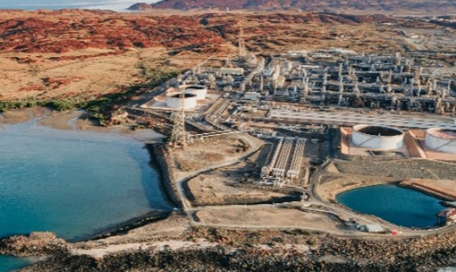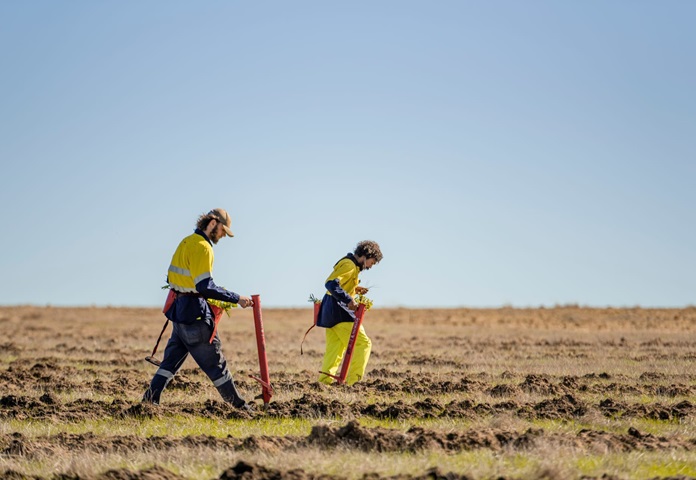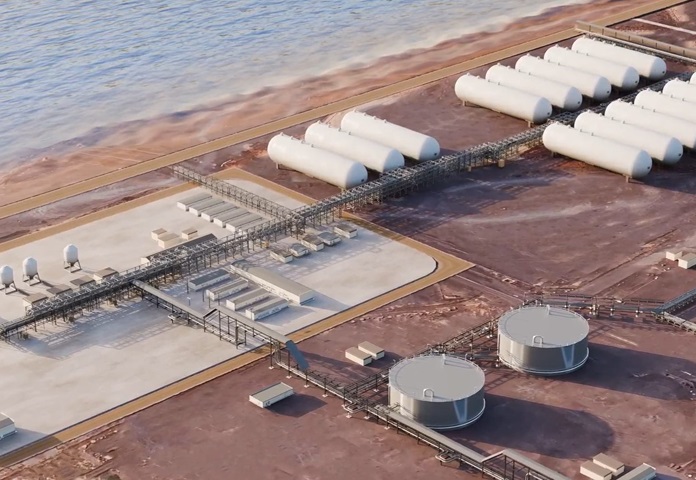.tmb-ptitle-mob.jpg?sfvrsn=b9f48d0_2)
Lower Carbon Services
Learn more about Woodside Energy's approach to carbon management through carbon capture and storage (CCS), carbon capture and utilisation (CCU) and offsets.
Our objective is to thrive in this energy transition as a low cost, lower carbon energy provider. Woodside’s CCS, CCU and offsets have key roles to play.
We see the demand outlook for CCS forecast to build in future decades.
Our approach to carbon management
Woodside established a carbon business in 2018 in order to develop a portfolio of carbon credits.
We are also investing in the new energy products and lower carbon services our customers need as they decarbonise. This includes progressing opportunities such as CCS and CCU. We have a target to invest US$5 billion in new energy products and lower carbon services by 2030.1,2 We also have an emissions abatement target to take final investment decisions on new energy products and lower carbon services by 2030, with total abatement capacity of 5 Mtpa CO2-e.3,4
The role of carbon credits in our decarbonisation plans
Woodside utilises certified carbon credits to offset equity Scope 1 and 2 emissions that are above our targets in a given year after design out and operate out measures have been taken. The availability of carbon credits to offset emissions is important because: gross emissions can fluctuate, for example, due to portfolio change or for operational reasons, asset decarbonisation plans can take time to implement, especially where they are large scale or complex engineering projects, and some decarbonisation technologies may prove too expensive to implement efficiently.
The ability to utilise carbon credits means that we can maintain our target trajectory and continue to reduce our net equity Scope 1 and 2 greenhouse gas emissions, despite these variable factors. Like our asset decarbonisation plans, our portfolio of carbon credits enables our base business to manage the price risk associated with regulations and our corporate net equity Scope 1 and 2 emissions targets. Carbon credits are available now and can be used in the short and medium term for emissions that are otherwise not technically or economically viable to avoid or reduce. 5
Capturing and storing carbon from existing and new industries
CCS is a mature technology which represents a proven solution to abate large-scale industrial emissions. Services like CCS can help customers reduce the emissions that they would otherwise generate when using Woodside products (or similar products sourced from others). Because CCS is also a solution for reducing Woodside’s Scope 1 emissions at our assets, we have the potential to underpin the development of CCS projects for our own use whilst customer demand develops.
We believe CCS will play an increasing role in the energy transition, and also that Woodside has competitive advantages including its knowledge of geoscience, subsurface engineering and bulk-gas handling.
As a participant in various joint ventures, we hold five greenhouse gas assessment permits enabling carbon capture and storage assessments in the Browse Basin, Northern Carnarvon Basin, Bonaparte Basin and Gippsland Basin.6 We have also entered into three non-binding memoranda of understanding to enable studies of a potential CCS value change between Japan and Australia.
Aiming to recycle carbon into useful products
In the longer term, carbon capture and utilisation (CCU, also referred to as carbon-to-products) has the potential to utilise third party sources of CO2 at scale.
In 2023, Woodside completed a number of engineering studies with CCU technology developers LanzaTech, NovoNutrients, StringBio and several engineering firms. These studies have helped inform how their technologies may be integrated and optimised to convert greenhouse gases into a variety of useful products.
Woodside is a founding partner in the RECARB ARC Hub based at Monash University which is exploring Direct Air Capture of CO2 for use in products.
1. Includes pre-RFSU spend on new energy products and lower carbon services that can help our customers decarbonise by using these products and services. It is not used to fund reductions of Woodside’s net equity Scope 1 and 2 emissions which are managed separately through asset decarbonisation plans.
2. Scope 3 targets are subject to commercial arrangements, commercial feasibility, regulatory and Joint Venture approvals, and third party activities (which may or may not proceed). Individual investment decisions are subject to Woodside’s investment targets. Not guidance. Potentially includes both organic and inorganic investment.
3. Includes pre-RFSU spend on new energy products and lower carbon services that can help our customers decarbonise by using these products and services. It is not used to fund reductions of Woodside’s net equity Scope 1 and 2 emissions which are managed separately through asset decarbonisation plans.
4. Includes binding and non-binding opportunities in the portfolio, subject to commercial arrangements, commercial feasibility, regulatory and Joint Venture approvals, and third party activities (which may or may not proceed). Individual investment decisions are subject to Woodside’s investment targets. Not guidance.
5. By ‘otherwise not technically or economically viable to avoid or reduce’, we are referring to the utilisation of carbon credits for emissions that remain above our targets after ‘designout’ and ‘operate out’ activities in a given year and our internal carbon price of $80/t CO2-e (real terms 2022)
6. For information on our greenhouse gas assessment permits and the Climate Transition Action Plan and 2023 Progress Report for further information on Woodside’s CCS projects.





